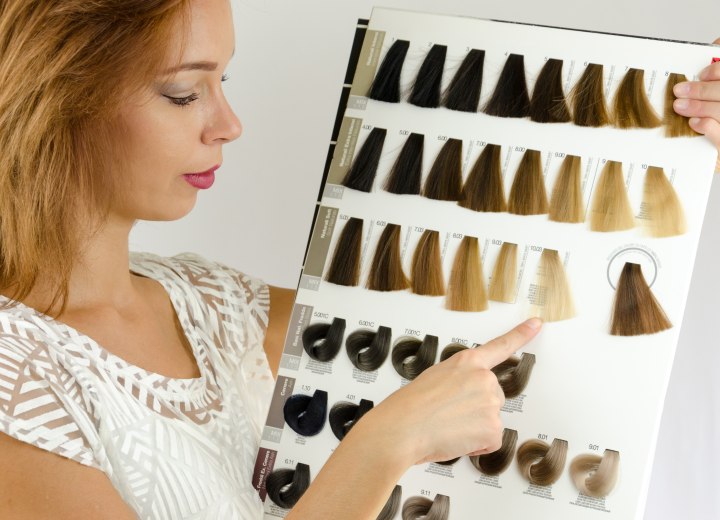Hair Color Theory

A: Well, it sounds like you need some simple reminders of your color theory. The color palette runs to cool or warm colors. Colors that have a red, yellow and orange base pigmentation are considered warm, while those with blue, green, and violet bases are considered cool.
My advice is to get yourself some blank swatches from your beauty supply store (they can order them if they don't have them in stock - or you can shop online). These are hair swatches that have already been lifted of the natural color and are ready to have color applied so that you get an idea of how the color will look after such high-lift processing. They are necessary because they already have removed all traces of the hair's natural pigment.
After you get your swatches, get yourself a selection of hair color of the same color level. Get one of each pigment base color that you can find and a bottle of 10-volume developer. Make sure to use the same brand of hair color you use in the salon, as manufacturer's formulas can vary distinctly.
Then, you simply should do some testing to mix and match the appropriate pigment bases and try to match the one of the other colors. For instance: do a swatch with a color that has base orange, and try to duplicate the color by mixing red and gold bases.
The thing to remember is that while there is a scientific theory and formula involved, color work is an ART, and as such requires some instinct. What you will do with these tests is to hone your instinct. Then, once you feel comfortable with your blending base pigments, you can try working on your lightness-level matching.
In lightness level matching, you should remember that you can combine different lightness levels and divide by the number of parts. For example: if you need a level 5 color, but only have level 4 and level 7 color of the right pigment base, you can use two parts of level 4, plus one part of level 7 and get a level 5. {4+4+7= 15, divided by 3 parts = 5).
I hope this helps you to understand things better.
©Hairfinder.com
See also:
How to color hair
Cool and warm hair colors explained
The 10 hair color levels